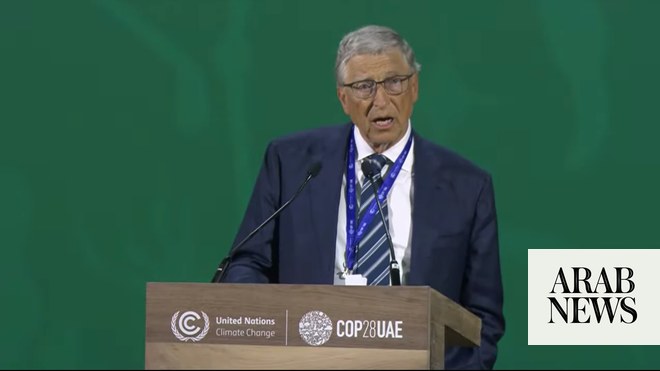
LONDON (Reuters Breakingviews) - Bill Gates is an imperfect messenger on climate change. The world is not exactly lacking in rich men with big ideas about what other people should do, or who think technology can fix any problem. Given he owns big houses and flies in private planes, who is he to lecture anyone on the environment?
The Microsoft founder agrees. Gates’ new book, rather disarmingly, starts with this exact same health warning. The more substantive question is whether the world’s third-richest person has anything to add to the forests of literature on the impending climate crisis. Somewhat surprisingly, the answer is yes.
The primary benefit of “How to Avoid a Climate Disaster: The Solutions We Have and the Breakthroughs We Need” is not in the answers to the questions its title poses. Gates thinks we need a carbon price, electrification of everything that can be electrified using zero-carbon energy sources, and a major push by governments worldwide to invest in technology to solve some of the problems this creates. These are sensible prescriptions, but commonplace among climate-watchers. What the book does unusually well is to lay out the parameters of the debate in a way that non-specialist readers can understand.
Gates has various handy rules of thumb. He tells you the world produces 51 gigatons of global greenhouse gases per year, roughly two-thirds of which are carbon dioxide. He tells you that a gigaton is a billion tons, that a watt is a bit of energy per second, and that kilowatts, megawatts and gigawatts are the relevant power measurement metrics for houses, towns and major cities or countries. He also tells you that the best way to judge a carbon reduction scheme is to divide the intended drop in emissions into that 51 gigaton figure.
This perhaps obvious stuff is rarely spelt out succinctly. The same goes for where emissions come from. Generating electricity is responsible for just over a quarter of greenhouse gases. The biggest emitter, at 31% of the global total, is the manufacturing of steel, plastics and cement, which produces carbon dioxide even though there is no combustion. A fifth comes from plants and animals, 16% comes from plane and car emissions, and just 7% from heating and cooling ourselves. The middle half of Gates’ book, which consists of chapters going through these different factors, is the main reason to read it.
Gates acknowledges a debt to the late British academic David MacKay, whose seminal 2008 book “Sustainable Energy – Without The Hot Air” set out the ground rules on how to write incisively on the topic. The software tycoon is a credible successor. His origins as a tech geek mean he has no qualms in crunching the numbers. Instead of just asserting that current ways to remove carbon from the atmosphere are too pricey, he takes readers through a calculation showing so-called Direct Air Capture would cost $5.1 trillion a year.
Gates’ plutocrat status may undermine parts of his message. As the largest shareholder of Signature Aviation, which services private jets, he has a stake in a heavily polluting sector. Some of his zero-carbon enthusiasms, like nuclear outfit TerraPower, are best understood in the context of his financial interest in them. And he’s not immune to occasional high-octane humblebragging. After the 2015 Paris Agreement on climate change he emailed two dozen similarly loaded acquaintances to cough up money for green research, and together with governments wound up annually unlocking new funds of $4.6 billion. As one does.
Still, the man famous for his tussles with U.S. antitrust authorities in the 1990s acknowledges when he has a financial interest. Even when, as with a duff investment in biofuels, it cost him $50 million. His rarefied position arguably adds to his credibility. It allows him to pick the brains of pretty much any top climate expert or financier.
That doesn’t mean all Gates’ prescriptions are as unanswerably right as his sums. The so-called “green premiums” he uses to assess how easy it is to pivot to zero-carbon alternatives in different sectors are based on assumptions of how fast the cost of the respective technologies will fall. Given the pace at which the price of wind and solar power and batteries have plummeted over the last decade, this may be too conservative.
Still, Gates admits as much. And he is hardly arguing for inaction. Instead he wants governments to quintuple climate-related research and development spending over the next decade. He cites the Human Genome Project, which mapped humanity’s genetic footprint, as a template for high-risk, high-reward intellectual legwork. Technology, in other words, will ride to the rescue and erode green premiums. It is indeed the solution for everything.
It’s also arguably a way of avoiding hard political choices. Other, messier ways of reducing carbon emissions to net zero involve the globe consuming much less energy, or depriving developing economies of growth fuelled by coal power, or making people pay lots more for their energy. But then, as Gates says, he thinks like an engineer, not a political scientist.












